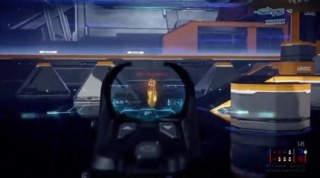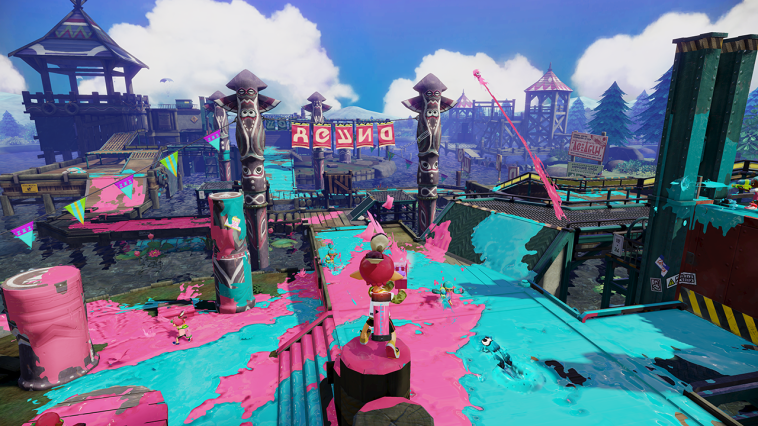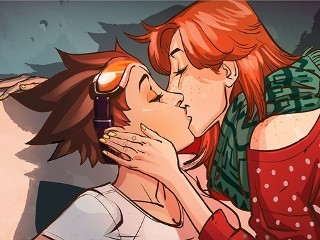2016 in Review: How Shooters Got Their Groove Back
By Cav829 17 Comments

The year 2015 was a rough one for the shooter genre. Turtle Rock’s lofty hopes for Evolve as an eSport were crushed under the weight of microtransactions. It was soon followed by the pedestrian and tone-deaf Battlefield: Hardline. The fall brought us a series of middling shooters: Call of Duty: Black Ops 3, Star Wars: Battlefront, Halo 5, and Rainbow Six Siege. Even while Battlefront and Black Ops 3 met commercial success, there was a general sense of fatigue with almost the entire shooter genre.
For nearly a decade, shooters have lived in the shadow of Call of Duty. In a post-Modern Warfare world, it’s perfectly understandable why other developers have wanted a piece of that sweet, sweet Call of Duty pie. As AAA production costs continue to rise, developers do have to consider sales, and CoD continues to be a license to print money.

The problem is, rather than finding their own Modern Warfare magic, shooter after shooter seemed to further incorporate elements of Call of Duty into their games. Perhaps the series that most reflected this trend was Halo. Despite being one of the most acclaimed and financially successful shooter series of the modern era, 343 seemed convinced the series needed to abandon its unique feel in favor of CoD-influenced conventions. This eventually culminated in Halo 5, a divisive game at best. Gone was the more methodical feel associated with Halo in favor of a faster twitch-shooter style complete with something many thought would never come to the series: aiming down sights. But it wasn’t as if Halo was the only offender here. Star Wars: Battlefront felt more like a Battlefield mod rather than anything resembling the kind of unique identity previous Battlefront games achieved.
Even while this was going on, the seemingly unstoppable success of Call of Duty was starting to wane. While Black Ops III did better than the previous year, it continued the downward trend of the series since it peaked with Modern Warfare 3 and Black Ops II. Even while Advanced Warfare had its fans, it didn’t seem to go far enough to attract newcomers to the series. Meanwhile, Black Ops III felt like a clunkier copy of the slick Titanfall that had been released in the prior year. Flash forward to 2016 and the latest Call of Duty, Infinite Warfare, feels downright archaic.
Call of Duty copycats were hardly the only things sinking the shooter genre. Other trends generally disliked by players included games plagued by microtransactions, splitting the player-base through said microtransactions, and forced eSports. The game most emblematic of all three of these issues was the aforementioned Evolve; a game almost dead on arrival in large part thanks to corporate greed being at the forefront of almost every design decision. The desire to make a profit on a game is hardly something most gamers would fault developers for, but you need to establish an audience before you can start thinking of how to milk it.
The singular source of something different for shooter fans proved to be one of the biggest surprise hits of the year: Splatoon. A colorful, punk mix of shooters and paintball, the game enthralled players of all ages and experience levels. Sadly only available on the rapidly dying Wii U platform, Splatoon nevertheless sold over four million copies and became the newest hit franchise in Nintendo’s expansive catalog.

What were the secret ingredients that made Splatoon such a success? It largely comes down to a combination of accessibility and uniqueness. The shooter genre has long been unapproachable to newcomers, an especially problematic issue when designing one for a younger audience. Splatoon answered this issue by baking user friendly solutions into its design: shorter game length, no voice chat, and multiple roles for players beyond just killing opponents. Meanwhile, the game’s punk rock aesthetic, complete with a zany, original soundtrack and colorful art design created a unique identity for the game.
So that brought us to 2016, a pivotal moment for shooters where we’d perhaps see if anyone could turn the fortunes of the genre. While it proved there was an audience waiting for some something new from the genre, Splatoon did not offer some magical, repeatable formula that others could look to copy. The secret spice in the end was simply finding an identity all its own. And that was the theme we repeatedly saw in 2016 from shooters.
The constant theme from each successful 2016 game was the same we saw from Splatoon: a unique identity. Whether that game was an update on a classic series like Gears of War 4, a refinement on a recently new IP like Titanfall 2, or even a bigger bolder entry in a long-running series like Battlefield One, up and down the line we saw perhaps the best year for shooters in a decade.
The game perhaps most representative of the value in finding and owning a unique identity this year was DOOM. DOOM spent many years in development hell. At one point, a nearly complete version of the game was scrapped. The reason? The team eventually realized they had created DOOM of Duty rather than a modern take on DOOM. Had it been released as was, it would have likely been received much like DOOM 3. Thankfully, id realized this ahead of time and went back to the drawing board.
If you haven’t had a chance to catch up on Danny O’Dwyer’s excellent DOOM Resurrected documentary, it’s well worth a look. Perhaps what best encapsulates the revised design philosophy of the game is the game’s first fifteen minutes. Rather than bogging the game down via your typical table setting checklist of introducing plot and providing a tutorial to the player, the game takes all of about thirty seconds to put a gun in your hands before telling you, “there are demons, go kill them.”
I’d be remiss not to devote some time to 2016’s biggest hit: Overwatch. Blizzard was not the only developer this year to realize translating a MOBA into an FPS format had potential, but they were certainly the most successful. While some might call it a modernization of Team Fortress, Overwatch almost resembles a Smash Bros. style mashup of characters from multiple games under a common ruleset. From Soldier 76 (Call of Duty) to McCree (Counter-Strike) to Pharah (Quake), the game takes influence from numerous games. From simple to use characters like Mercy to complex ones like Ana, somehow Blizzard cracked the magic code of simple to play, hard to master, addictive and accessible gameplay that highlights almost every design doc, yet rarely comes to fruition.

Overwatch was also an example of how to promote an eSport. Rather than forcing it down the throats of players from the start, Blizzard waited several months after release to put out a casual competitive mode. While the first LAN tournament came shortly after release, efforts to really start promoting the eSport side of the game were fairly light at first. Once the game had been better established, Blizzard promoted the Overwatch World Cup at Blizzcon, and would follow it by establishing the Overwatch League: gaming’s first attempt at a salary-based professional gaming league. While we have yet to see if these efforts will be met with success, it’s an exciting idea to move eSports into something more professional and organized that will better reward the players.
Sure, we could spend time discussing the duds like Battleborn, but even then you could see buried within that game a desire to create something different. It was simply a case where Overwatch made every right decision, Battleborn made about every wrong one. But games like Battleborn do exemplify the risk of trying to be original. Unfortunately, such renaissance periods for a genre only come once playing things safe becomes less rewarding.
At least for now, a period of DOOM and Overwatch influenced games would not be a bad norm after years of Call of Duty clones. Paladins for example is a perfectly acceptable game in its own rights. And DOOM was so much fun that I for one welcome DOOM 2: Heller on Earth. There is a lot of room in the formulas of each of these games for developers to play with. As long as these games remember the lessons of the CoD-likes, shooters will be in a good place for years to come.
